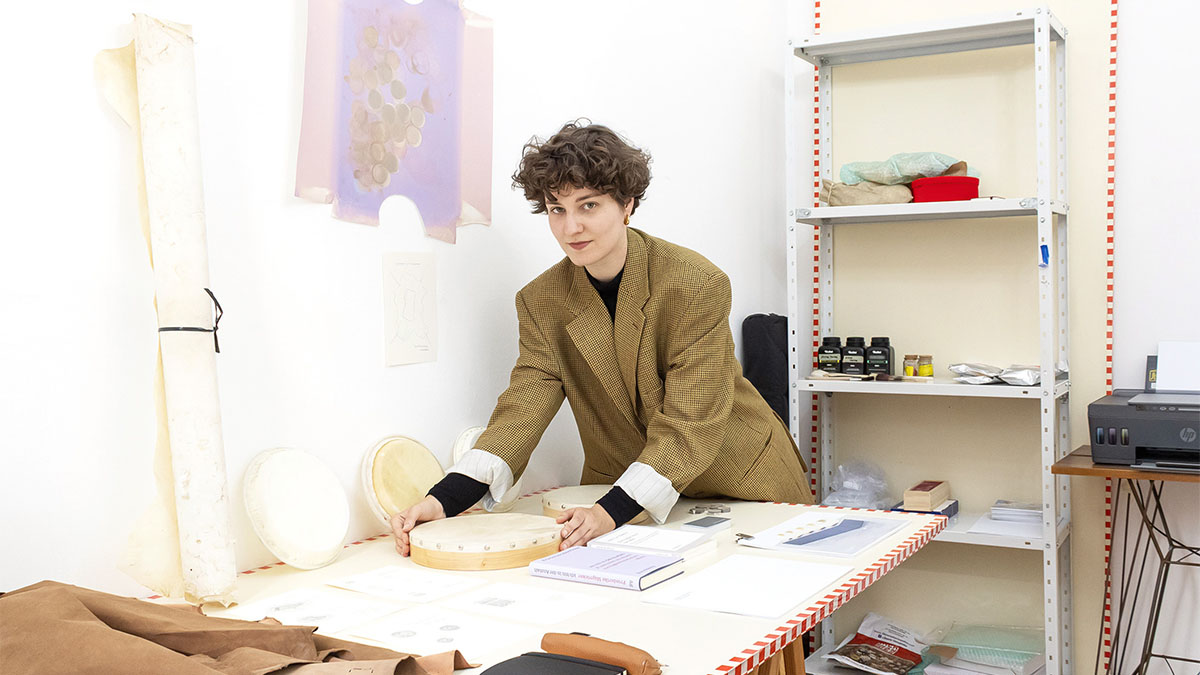
Shortly after embracing photography, the artist realized that she was not interested in the preservation of time, but in time itself, which makes materials not only change but also decay. Nowadays Anna Carina Roth works among others with leather, latex, wax, and ceramics. We took time to talk about beginnings, dreams, impacts and the work of personalities such as Jean-Luc Nancy and Edmund Husserl, Eva Hesse and Rebecca Horn, and about the resonant literary inspirations of Friederike Mayröcker.
Erka Shalari: Can you share your experience of your initial week at the La Ira De Dios residency? Why did you wanted to move from Vienna for a while and what it means for you to be there now?
Anna Carina Roth: As an artist, I feel nurtured by new surroundings, it‘s very important to me to see the world and feel the connections to the people to get inspired for new works. There were no major exhibitions planned in 2023, so I had the feeling that it could be a year of exploring for me, to get new inputs, learn about different cultures, and be surrounded by languages I don‘t necessarily speak. When I applied for the residency end of 2022, it was a very spontaneous decision. Last year I started with a site-specific series called „Randbemerkung“ (Eng: side note) where I use analogue photographic paper as a surface in different social spaces to collect traces of people that come together. I wanted to push that work further and do a public intervention somewhere outside of Austria and stumbled across the residency program of La Ira De Dios in Buenos Aires.
I‘ve never been to South America before, but I had always been interested in going. I also imagined Argentina as a very sensual and outgoing place and thought my project could fit in there very well. So I sent them my application. Pablo Caligaris, the curator of the program and director of an association called ‚Red Quincho‘ that runs a residency program all over Argentina, liked my work and offered me a spot. I applied for funding in Austria, and luckily everything worked out. Just four days ago, I arrived in Buenos Aires and will stay here for the next two months. The first few days were quite intense – it started with arteba – a huge art fair that we went to two days in a row and further we visited several galleries, museums, and some artists in their studios. I loved that it was quite a busy schedule, but at the same time, my jetlag wasn‘t prepared for that. So I struggled quite a bit.
My first impression of Buenos Aires is that it’s a very diverse city. Visually to me it’s a weird mixture of Paris, Barcelona, and New York. At least these are the cities I know and I could compare Buenos Aires to. The culture and art scene is huge, there are many exciting places to see. People here are super open and a kiss on the cheek is the classic way of saying hello. So far I haven’t seen a lot outside of Europe, that’s why I’m especially excited about my stay here. It’s kind of a dream come true.
Have you compiled a list of places you wish to visit while you’re in Argentina?
I want to see a lot of different museums, the Museo de Arte Latinoamericano de Buenos Aires has some works by Frida Kahlo that I can’t wait to see. Also, there’s a huge bookstore in a former theatre from 1919 and there are some other buildings like the Palacio Barolo I want to visit, but in general, I try to take it easy and soak up the city through the art scene I’m now in. In general, I hope I manage to have some time to at least get one trip outside of Buenos Aires, there are some things on my list like the Iguazu waterfalls, the Quebrada de Humahuaca mountains, or the Perito Moreno glacier. But as Argentina is very big, it’s impossible to see it all. So I’ll have to come back one day.
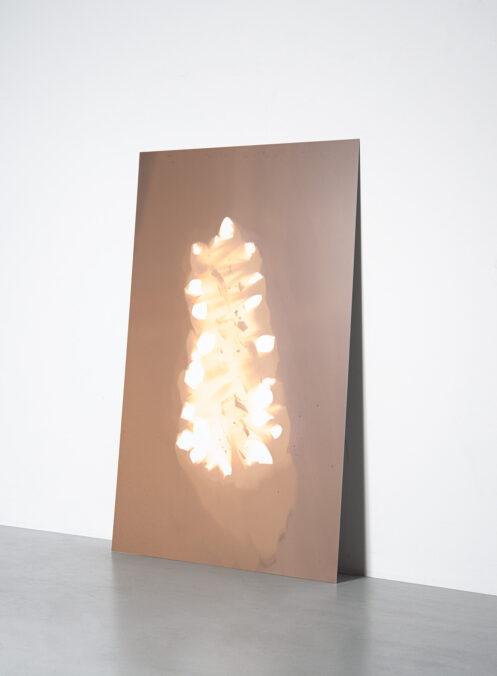
I was reading your bio and I find very interesting the combination of photography and later Site Specific Art. You say among others „I now continue my studies there, as my work more and more moves away from photography. (…). The photographic thinking is probably still there but the tools and materials I use and the works I create now are not visibly connected to photography anymore.“
What ignited your fascination with cameraless techniques, and can you elaborate on your photographic thinking, considering that even with your exploration of new tools and materials, certain core aspects appear to have remained unchanged?
Studying photography in the time we are living in now has been quite challenging in my opinion. Everyone is taking photographs, even our mobile phone is a camera. There’s a specific expectation people have in general when thinking about photography. Some artists slowly start to change that, but in general, it‘s a very conservative view on the medium and how to use it. The photography class I was studying in was thinking very differently about the medium and I liked that. But at some point, I had learned enough about photography and its discourse and it was time to move on. I decided to switch to the site-specific art department with Paul Petritsch when I started crossing site- specific with photographic techniques.
The space my objects and installations are exhibited in plays a big role, especially in how they change. It’s not that I wasn’t able to do anything I wanted in the photography department, but the discourse around photography was still very strong. When I look back on my early works, I was always quite more interested in the analog photographic materials and how they change over time than what a photograph can show. Back then I used to work with polaroids where every single photograph was a unique chemical process itself. After the photo was taken it was still possible that it reacted to heat or cold and fades over the years. At some point, I had the feeling that there was nothing that hadn‘t been photographed through a lens and I got bored by the fact of just continuing to work with a camera. Instead of preserving time in a photograph I love to work with time itself and showing it with materials that actually change or maybe even fall apart.
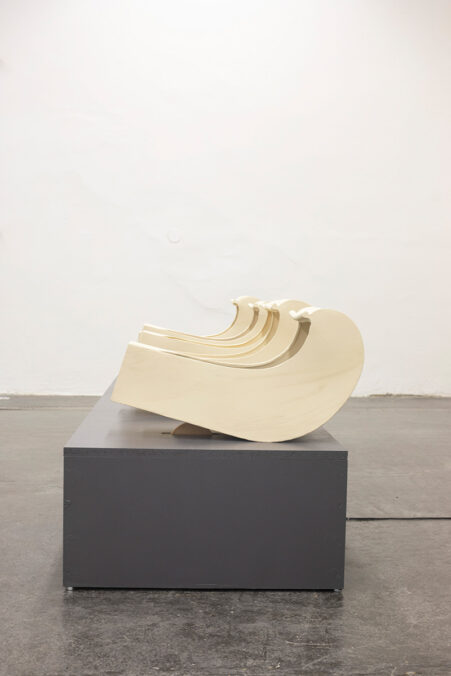
These materials don’t necessarily have to be photographic ones. For example, I like to work with leather, latex, wax, and ceramics. These materials are soft and connected to the body, but change over time and collect traces by human beings and/or their surroundings. They show the passing of time in their material quality – and that‘s what I mean when I say my photographic thinking is still there.
The factor of time is the most important in photography. Ceramics for example is very special because it has the passing of time already inscribed into the material. It’s a slow material that you form with your own hands and it goes through certain stages until the kiln does the rest. My works deal with traces that the human body in particular leaves behind as well as the trace as a relic. It’s a lot about the question: What remains? To me it‘s beautiful to create an oeuvre that contains works every person will see differently because it will never look the same. It grows old with us, so to speak. Nothing lasts forever and as human beings, we know that. It‘s just hard for us to accept.
My works deal with traces that the human body in particular leaves behind as well as the trace as a relic. It’s a lot about the question: What remains?
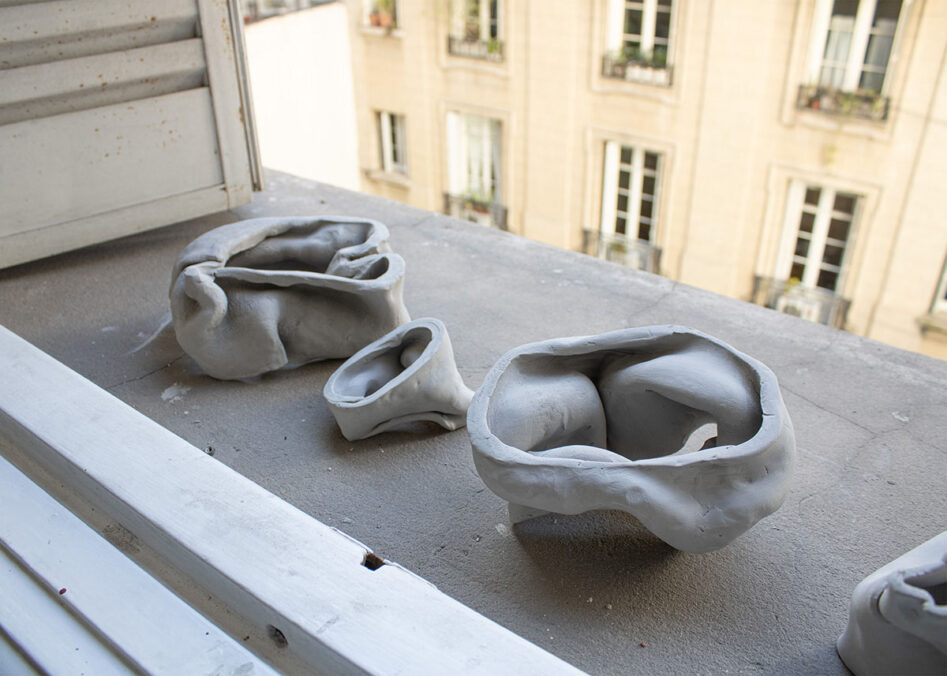
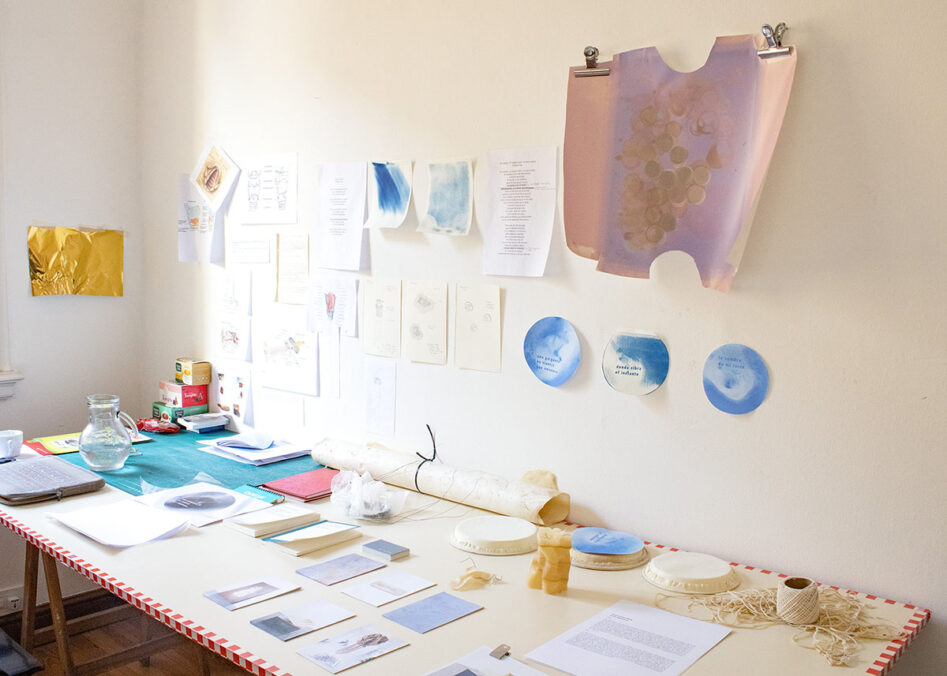
Let us go back in time, tell us something about you and your background.
I was born in 1993 in Burgenland, Austria, and grew up in the countryside before moving to Vienna in 2014. Art as a profession at first was never an option for me, although I had a very creative childhood. I used to draw a lot when I was in primary school, played the flute for several years, and started writing short stories from early on. I’m constantly writing diary since I was seven years old for example. In my teenage years, I continued with poetry. When I was 16, I also explored photography as a medium to express myself. Anyway, I was raised in the belief of working something ‚proper‘, as I was able to graduate from school and study – which both of my parents couldn‘t when they were young. I still was kind of on the creative side when I chose I want to become a fashion journalist, but after studying communications for quite a while, I missed expressing my creativity to the fullest.
So I started with artistic photography at Schule Friedl Kubelka in 2016. The school run by the artist Anja Manfredi changed a lot in my personal development and opened to me my path as an artist. After my diploma there I applied at the University of Applied Arts in Vienna and got in. That was a big step for me. The facilities and workshops I got at the art university got me excited a lot and still do. Studying art and working as an artist is a precarious but exciting adventure that lead me to the person I am today. At the moment I enjoy the possibilities and support I got through the last years and look into the future with excitement. There’s still so much to discover and I’m also slowly thinking about graduating and the diploma show I want to do sooner or later.
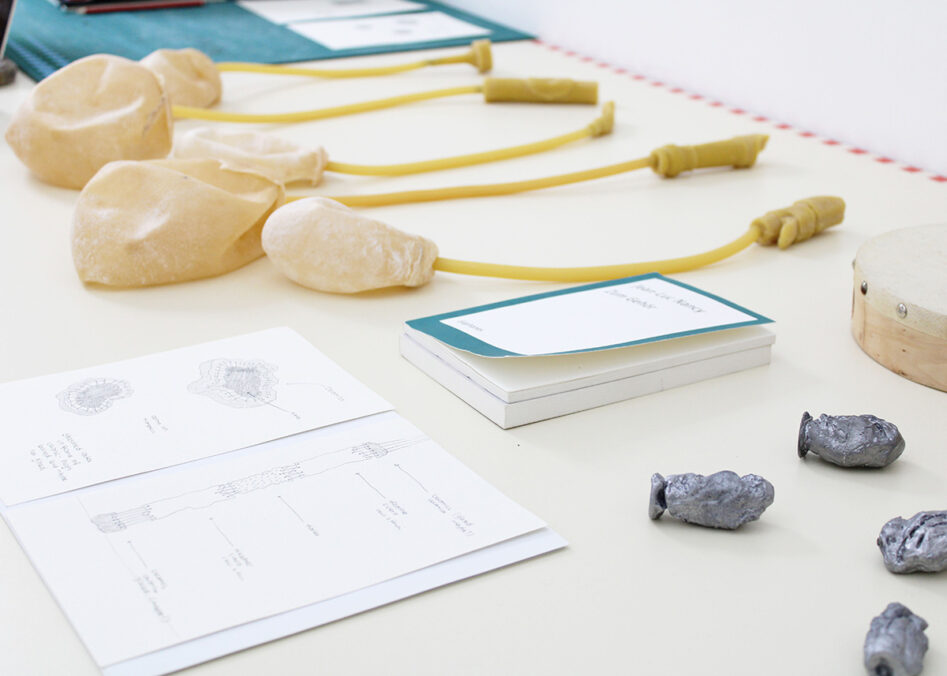
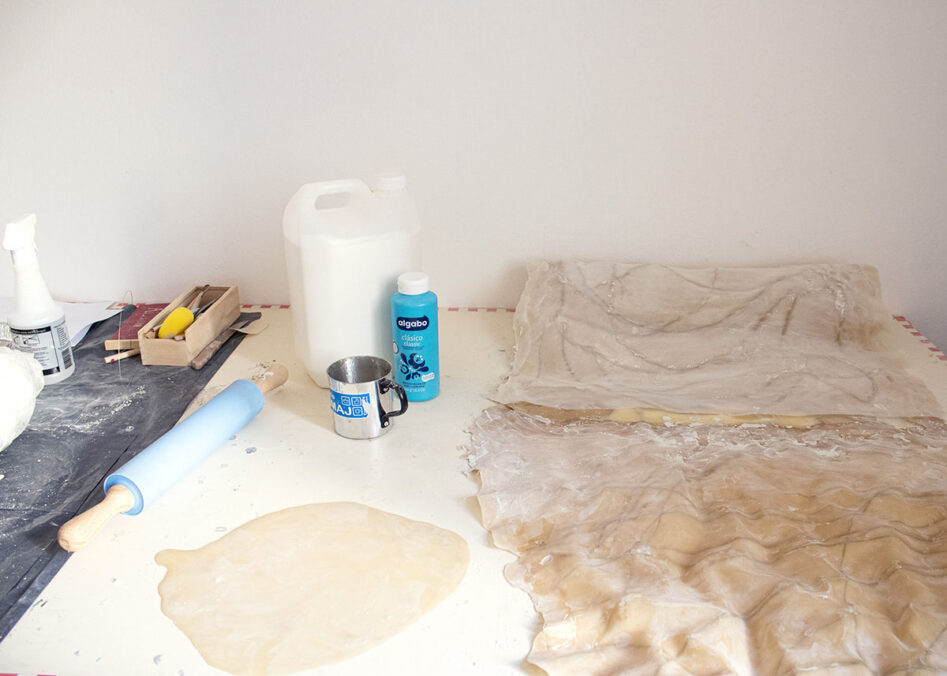
Why do you think it become so important to you to write a diary?
It’s a funny story, but I started to write a diary because of a cartoon I was watching when I was in primary school. It was called ‚Doug‘ and the show focuses on the early adolescent life of the main character Douglas Funnie. He regularly writes everything he experiences into his diary. This idea of documenting caught me very early, I was just 7 years old when I started my first diary, and ever since I have never stopped.
I kept them all, so my whole life is kind of documented in words. To me, it’s a way to be able to travel in time when re-reading them. Sometimes we tend to forget so many little things in life, that it’s a nice thing to know that somehow every chapter of my life is sort of written down in a book. Early on I kept writing whole pages of my days but for the last 2 years I just wrote down 2-3 sentences for every day, to just keep the essentials preserved.
Which would be five things that impacted your work a lot?
It’s hard to choose just five things, but my work is influenced a lot by literature, philosophy, or feminist theory. I’m a very sensitive person to my surroundings and soak up everything like a sponge. Getting to know exciting human beings inspires me a lot. In spring I was living in Cairo, Egypt for nearly 3 months and that changed my view on certain things too. Anyway, the most important artists to me are Eva Hesse and Rebecca Horn. When I saw the restored „Expanded Expansion“ (1969) by Eva Hesse at the Guggenheim Museum in New York last year, I was standing in front of it crying.
That happens to me very rarely. The show of Rebecca Horn at the Kunstforum Wien in 2021 for example also had a major impact on me. I went there several times because I couldn’t help but be surrounded by her artworks as often as possible. I was drawn to them like a moth to the light. Also, I was fascinated by the show of Rosemarie Castoro at the MAK Vienna – it has been one of the best shows I’ve seen in a while. In my recent works, I am very interested in Jean-Luc Nancy and his philosophical theories. His work is very poetic and evolves around the body. I currently read „Listening“ by him which in the end also led me to Edmund Husserl’s „Phenomenology of Internal Time-Consciousness“. Husserl talks about time- consciousness and connects it with listening to a melody. For two years now I‘m also obsessed with Friederike Mayröcker, an Austrian writer. You won’t find me anywhere without reading a book of her. Her books inspire me to sculpt, and I sometimes use passages of her writing as titles for my works. My goal is to read her whole oeuvre.
The title of the book of her I brought with me to Buenos Aires for example is „ich bin in der Anstalt: Fusznoten zu einem nichtgeschriebenen Werk“. Can’t wait to jump into it.
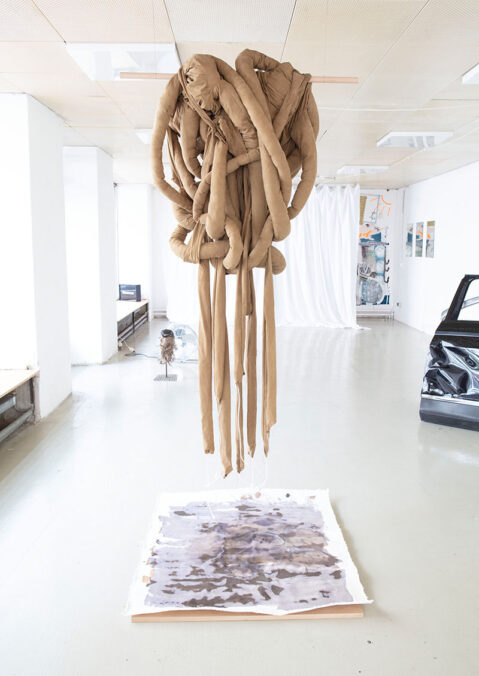
I’m both curious and understanding, but I feel compelled to ask: What do you believe reading the entire body of work will bring?
The reason why I want to read the whole oeuvre is because I kind of started to collect phrases in her books. Firstly I mark them with a highlighter, very spontaneously, and then write them down into my sketch book. So I kind of have the ones that touched me the most with me. I get a lot inspired by her way of using words. Until now I never read any of her books twice. So everything I marked was on the first read. I got kind of addicted to her oeuvre and as long as I can find new phrases in her books, I will do that.
Where and how do you engage in your reading? Do you pause on particular pages, fold corners, or perhaps read aloud at times?
I usually read in old Viennese cafés – they are my favorite place to read. Otherwise, I read at home on my couch but here in Buenos Aires, it will be different I guess. As I’m mostly in the studio I’ll try to get used to reading in the studio. Usually, I mark phrases in books with a highlighter. I do that in any kind of book. Reading Friederike Mayröcker is like getting into a rhythm – you can’t treat it like any other book. You need to have this special mood to start reading and you need to get into her rhythm of writing and thinking. It’s like crawling into her head and feeling the beauty of words and phrases. It’s an exceptional way of experiencing words I think because it takes away the logic of any kind of other writing.
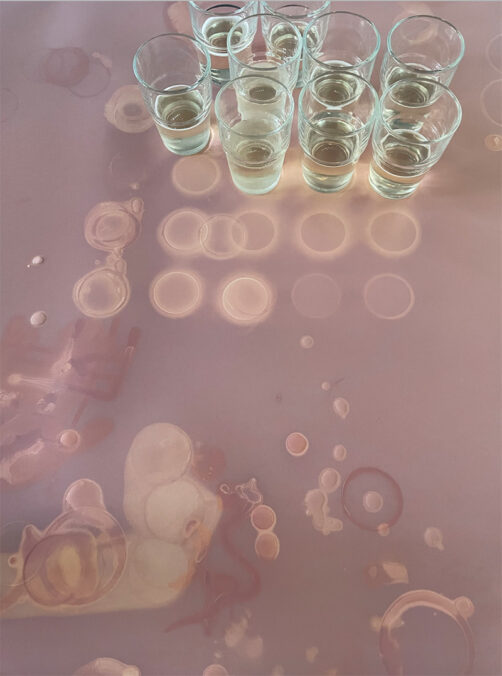
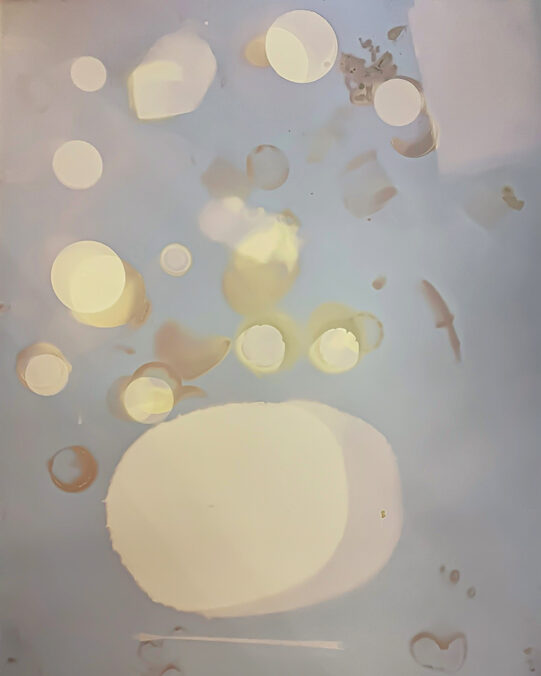
A Darkroom in a Bathroom
I’m quite fond of the pieces you’ve created using light-sensitive PE paper, like An der Schwelle, Nur ein Wimpernschlag entfernt, Mischverhältnis, or Frühstück mit L. Could you share some insights into the processes behind these works?
This way of working all started with the participative installation „Mischverhältnis“ (mixing ratio). It was a bar I was running during the Angewandte Festival (an end-of-the-year exhibition festival of my university) which at the same time was an art installation. For the surface of the bar counter, I used light-sensitive paper – I collected the traces of glasses, touches, and liquids on the surface and fixed the paper in the darkroom in the end. To me, it is about the trace we leave behind, in that case in the moment of social encounters. „An der Schwelle“ (eng: on the threshold) was another site-specific approach where I replaced the doormat in the deepening at the Kunstverein Baden with a light-sensitive paper on wood. It was November when the exhibition opened, so people stepped on it with their wet shoes leaving their traces on the surface. „Nur ein Wimpernschlag entfernt“ (only a blink of an eye away) deals with the moment while we blink with our eyes and the period in between the blinks. I collected my eyelashes, placed them on the analog paper, and made some photograms with exposure times from 4 to 6 seconds (the average period of blinking) in the darkroom. „Frühstück mit L.“ (breakfast with L.)is part of the „Randbemerkung“ series, in that case, I placed the paper on the kitchen table while I was having breakfast with my partner.
How does the studio practice vary when transitioning from one location to another?
Every working situation is completely different, but you adapt very quickly. The space you work in definitely forms the artwork at some point. In Vienna for example I‘m without a proper studio at the moment. I do have a small working table at home for little things like mould casting or sewing on the sewing machine. I’m also in the process of building a small darkroom in my bathroom so I can do the few things I still have to do with red light in my own space. This summer I worked a lot in the countryside in the house of my partner, he has a ceramics workshop there and we align very well in our working rhythm.
I can build and burn ceramics there, do mold casting, and well more experimental „dirty“work. This time I used the attic of the house to finish the work I started producing in Cairo as I needed a lot of space on the floor which my flat definitely couldn‘t provide. Cairo was a special situation – I was living and working in a huge 200 sqm very empty flat there at the Austrian Cultural Forum having the whole space by myself. Living and working situation was intertwined. Because I was transferring the windows in the house into soft latex surfaces, I used the floor to get an overview of the amount of material I had already produced. I needed it for an inflatable object I was later finishing at the countryside house back in Austria. The flat in Cairo was a huge privilege as I had never before lived in such a huge place all by myself. In Buenos Aires, my studio is separated from my living space. It‘s about 10 min by bus from where I live. We are two artists in the residency program, and every one of us has her room to work in. It‘s a nice feeling to have a living space and a proper studio within walking distance.
In your previous email, you wrote „A lot of work in progress that not many people now (…)“. Are you ready to give voice?
Yes, I’m ready to give a glimpse of it. In the last months I was finishing three new works, one was the inflatable object I started working on in Cairo in January. It’s a site-specific work made out of latex that tries to transfer the feeling of the city of Cairo taking over the space. During my stay, I got interested in the different surfaces of the windows in the flat I was living in. I started reproducing them by applying liquid latex onto the windows. It’s a very slow process as the liquid needs to be applied in several layers, dry, and be pulled off and drowned into powder. At the end of my stay, I had around 50 pieces of latex that I finally brought together back in Austria.
My best friend and amazing digital fashion designer Katharina Halusa helped me to create a pattern for my work that uses the amount of material the best. The final object has the form of the map of greater Cairo and is around my height (1,70m). It will be inflatable by a foot pump and will lose air and change its form during the duration of the exhibition. The work is called „Die Eroberin“ and the concept was developed with the input of the Egyptian artist Bassem Yousri.
Another piece made out of latex but also wax is my new series „Zeitstück“ dealing with Edmund Husserl’s „Phenomenology of Internal Time-Consciousness“ where he connects time-consciousness with listening to a melody. I reproduced five mouthpieces of wind instruments into objects made out of beeswax but excluded their resonance body. I connected them to a latex tube and a sachet instead. To me, it was interesting that wind instruments are very close to the body by creating sounds with our mouths. It takes away the possibility to sing and play at the same time. The sachets symbolize the place where the sounds fell into and got caught, also they seem like human organs too. The materials itself they are built of are again connected to the passing of time. So instead of making sounds they will change their bodies over long periods reacting to the environment. This idea of language or the resonance body also relates to my work „Parole“ which translates the inside space of my mouth into abstract lead objects. Lead because it’s very closely connected to German sayings like „schwer wie Blei“ but also connected to the mouth itself when we think of the lead apron for doing x-rays of our mouths at the dentist. Apart from working on my site-specific installation „Randbemerkung“ here in Buenos Aires I also want to continue working with this metaphor of time and musical instruments as well as language. I brought some natural surfaces of drums as well as my photo emulsion and plan to do something with leather here. Back in Vienna, I have to finish two big kinetic installations as I have some upcoming exhibitions in 2024. One installation is made out of ceramics, water pumps, plexi glass boxes, and light-sensitive paper. It deals with the theories of Jean-Luc Nancy on the body. The other is a lightbox that also includes light-sensitive paper and refers to a phrase by Friederike Mayröcker. So there’s always a lot to do.
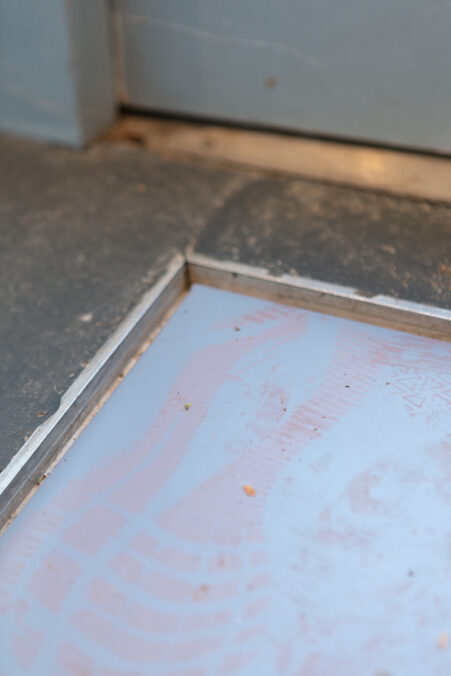
What will happen in Buenos Aires you think?
Here in Buenos Aires I just started getting materials I would love to work with – just today, it’s day 7, and I was strolling through some of the leather shops they have here. Buenos Aires has a huge meat industry and that’s why there’s a lot of leather too which is perfect for me. I dream of an installation that combines all the materials I love, leather, latex, and ceramics. They should be connected and form sculptures. I’ve done some sketches and we’ve got a meeting tomorrow with Pablo and his team in terms of what we want to work on in the next months. So it’s still in the beginning of figuring out.
I’d like to revisit the topic of photography and inquire about your sensations and the way you would describe the environment when you are inside a „dunkelkammer“.
It’s still a magical place and I guess nothing ever was more fulfilling to me than spending my time in the darkroom. Sometimes close to project deadlines, I would go in there for 12 hours straight forgetting about any human need like hunger or thirst. I would overcome my physical ability and not feel tired – just to walk out there having an endorphin rush. Somehow time doesn‘t exist in there, it‘s like a capsule I walk in fully concentrated on my passion. Maybe it sounds a bit cheesy but there‘s no feeling in the world comparable to that. Luckily I‘m in the process of building my darkroom in my bathroom in my Viennese flat at the moment – so I can use my time capsule at home soon.
What are the names of your favourite chemicals in the realm of photography?
The main chemical I still use is the Fix. It‘s the last step when developing film or paper, before washing the material. I use it for my series with the light-sensitive papers. It makes things last and stops the chemical process.
It has a very weird acid smell and if you touch it without gloves you won‘t get that smell off of your fingers for quite a while. I also like to work with photographic emulsion.
You can put it onto any surface to make it light sensitive which changed the possibilities of photography a lot. There are different kinds of them, lastly, I worked with classic ready-made foto emulsion but also salt print or cyanotype.
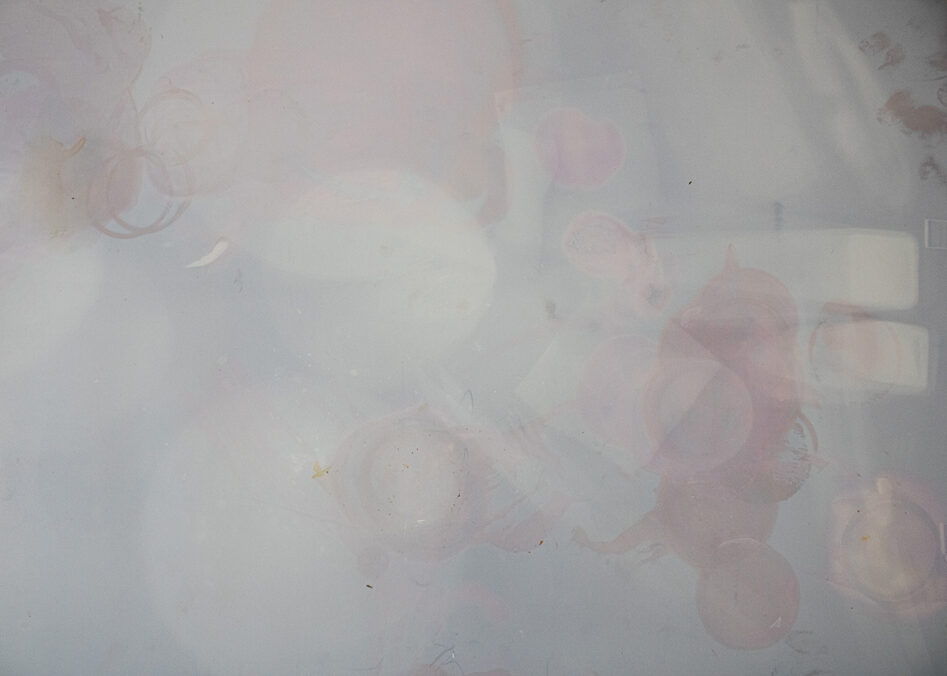
4 Weeks Later
How have been these weeks Anna?
My first month in Buenos Aires is nearly over and it wasn’t quite an easy start. My jet lag in the first week lead me to nearly my whole second week sick in bed. But then it was my 30th birthday mid-September and the day before I luckily got better, so I spent my day having breakfast and cake, walking around the city and taking the day very slow. The last two weeks I started printing visuals and researching a lot about the body and especially the organs for hearing and speaking, like the membrane of the ear and the larynx. I also bought a poem book by Octavio Paz, a mexican writer, to whom Jean-Luc Nancy was referring to in his „The fragile skin of the world“. I made some sketches of weird new sculptures that combine ceramics, latex and wire and started working on them. And I did a photogram at a bar together with my new friend and amazing painter Nicole Fregonese, which turned out beautiful as you can see. I’ll be doing some more ones next week. Now I’m looking forward to some trips outside of Buenos Aires, this weekend I will go to Iguazú for the waterfalls and next weekend I’ll head to Salta to do a tour to Purmamarca for the mountains and Salinas Grandes. Time passed by so quickly, so I’ll be back in Vienna soon too! Can’t wait to show what I was working on in the end.
Anna Carina Roth was born 1993 in Oberwart, Burgenland. She finished her diploma in Fine Art Photography at Schule Friedl Kubelka, before studying Photography at the University of Applied Arts in Vienna for a while where she is now in the class of Site-Specific Art. Traces that the human body in particular leaves behind as well as the trace as a relic are central themes in her work. Through materials that change and react with their environment, she wants to make the passing of time comprehensible. The viewers are often involved in the works: they trigger movement sequences of kinetic installations or unconsciously inscribe themselves with their presence in participatory, process-like objects. Her works were most recently shown at Foto Wien, ARD Art in Kairo, Galerie 52 in Essen, Kunstverein Baden and Landesgalerie Burgenland among others – http://www.annacarinaroth.com/



